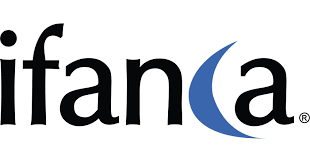
Eid al Adha festival of sacrifice heaps pressure on Malaysia to fix its livestock supply chain
Photo for illustrative purposes only: A Muslim boy touches a cow during Eid al-Adha, the Feast of Sacrifice celebrations, in the village of Serting, 130 km (80 miles) southeast of Kuala Lumpur December 10, 2008. REUTERS/Bazuki Muhammad
At the Masjid Tengku Kelana Jaya Petra in the suburbs of Kuala Lumpur, 10 cows will be slaughtered today for the Eid al Adha festival of sacrifice, or korban as it is called locally. Nine were bought by members of the community and a tenth was donated by JAIS, the Selangor Islamic Department, as it does every year to mosques across the state.
The number of cows has increased from seven last year, said Ammar Mustaqim, one of the members of staff at the mosque who travelled to the Ladang Hulu Yam farm outside the Malaysian capital to help choose the animals. But at the same time, the price per head has also been steadily rising, to 4,900 Malaysian ringgit from round 4,200 ringgit in 2015.
“The prices have definitely gone up a lot,” Ammar told Salaam Gateway. “And then the mosque adds a 350 ringgit charge to pay for the ingredients when we cook the cow.”
This increase reflects the dwindling nature of Malaysia’s herd and its reliance on livestock imports from countries like Thailand and Australia.
The Malaysian herd size was 867,091 head in 2016, according to most recent data from industry analysis conducted by Rabobank. Of this number, 14.8 percent were slaughtered throughout that year.
“As around 86 percent of Malaysia’s 2016 beef consumption was imported, mainly in the form of frozen carabeef from India, one might assume that the slaughter rate was mostly for the korban requirement,” Ben Santoso, a Rabobank Singapore food and agribusiness analyst, told Salaam Gateway.
Between 2010 and 2016, Malaysia saw an annual decline of around 2 percent in its cattle and buffalo population; and for 2018 Santoso expects a further reduction to 855,441 head, and predicts the slaughter rate will grow to 15.8 percent.
“Judging by the current rate of population decline, we also expect the country’s beef import requirement will increase to 90 percent of total consumption by 2022,” Santoso added.
ANIMAL WELFARE CONCERNS
Australia was one of the key exporters of live cattle to Malaysia as recently as 2015, when it shipped over 50,000 head after years of growing orders, compared to 21,330 last year, according to figures published by Meat and Livestock Australia, an industry-owned marketing and research company.
This decline can largely be attributed to the difficulties Australian producers face when supplying Malaysia under the Exporter Supply Chain Assurance System (ESCAS), a unique regulatory structure that holds them responsible for ensuring that the entire supply chain conforms to Australian standards, even after the animals have landed overseas.
Australian authorities have been increasingly critical of Malaysia’s approach to animal welfare, especially in the lead-up to the festival of sacrifice. To this end, Australian producers are not allowed to supply the country with cattle for ritual slaughter. Moreover, Australia’s Department of Agriculture issued an advisory in July to notify a suspension of the export of sheep and goats—both leading sacrificial animals—to Malaysia from July 7 this year until the completion of the festival.
This is in relation to reports received by the department following last year’s festival that demonstrated “poor animal welfare outcomes and loss of control and traceability of Australian livestock exported to Malaysia,” according to the advisory.
“Considering the … high risk of non-compliance during Korban, the lack of response from exporters in regard to ESCAS breaches in 2017, and the evident lack of effectiveness of exporter’s control and traceability systems, the department has determined that sheep and goat exports should be suspended for the six weeks prior to Korban 2018.”
“[The suspension] was off the back of the industry, under our leadership, taking the position that as exporters we would not provide any livestock into the festival period for this Korban. We needed to see some satisfactory changes to the way the supply chain works in Malaysia,” Simon Westaway, chief executive of the Australian Livestock Exporters’ Council, told Salaam Gateway.
“The supply chain really isn’t up to a standard for consistently managing livestock. Further work needs to be done, particularly during periods of high peak,” said Westaway.
“During the year it’s much more manageable but during Korban demand is much higher and more temporary [slaughter] facilities are established. Our exporter group took a view that we didn’t want to see any poor outcomes as a result of trying to service the market, from a welfare point of view,” Westaway added.
‘MORE HIGHLY REGULATED’ IN SINGAPORE
Whereas anyone or any mosque is free to slaughter animals in Malaysia, the process is much more highly regulated in neighbouring Singapore, which Westaway points to as an outlier for ensuring animal welfare.
This year, 3,700 Australian sheep was made available for this year’s ritual, which will only be carried out at 26 authorised mosques on the island, according to the Singapore Mosques Korban Committee (JKMS).
“Preparations for Korban at all 26 mosques include the JKMS and Agri-Food and Veterinary Authority of Singapore [AVA] conducting joint training for our volunteers on various aspects of animal care and handling. These closed-door training sessions ensure all centres adopt the same high level of standards as required by ESCAS, and that Korban operations will be carried out smoothly,” Sharifuddin Mohamed Ali, the committee’s chairman, told Salaam Gateway.
“The livestock imported from Australia are treated in accordance to the World Organisation for Animal Health’s internationally accepted animal welfare standards. The approved korban vendor appointed by JKMS is also regulated and has to strictly comply with AVA’s regulations so as to maintain internationally accepted animal welfare and food hygiene standards. The annual ritual is audited by internationally accredited auditor to ensure standards are met from farm to point of slaughter,” Sharifuddin added.
Dr Ross Ainsworth, a meat and consultant with over 40 years’ experience in the Australian and Southeast Asian livestock industry, is also impressed with Singapore’s system. “Singapore always has a habit for doing things correctly, and aren’t into corrupt and mischievous behaviour, so when the regulations are in place, things are done like they’re supposed to happen,” Ainsworth told Salaam Gateway.
According to Ainsworth, the Malaysian supply chain is notorious for operators cutting corners with ESCAS regulations to make a quick profit. Though doing so might save them money while charging their customers more for the livestock, it is an unsustainable long-term practice.
“As soon as you restrict dealers to a certain process [like ESCAS], the price of the animals will go up, and it’s too much of a temptation to give up—a 25 percent higher price with a cheaper system,” he said.
“But these animals are all tagged and they are followed [by Australian authorities]. You can’t not get caught: with ear tagging every animal has a unique number so it’s pretty easy to know where they have gone—or didn’t go.”
For him, though, a greater concern is the sustainable supply of livestock to a country that is struggling to produce its own or secure constant import streams.
“There aren’t many other places. Australia is a big dry place with a lot of animals in it, but the rest of this region has vegetable garden-type agriculture and not much livestock. There aren’t really many options.”
‘UNREALISTIC’ STANDARDS
Another livestock veteran who began distributing cattle in Malaysia in 1979, Dr Rosli Mai Lam argues that the Australian authorities should understand Malaysia’s limitations in adhering to the rules of ESCAS, and says it is “unrealistic” to have a standard regulatory benchmark for the whole world when internal systems vary widely between countries.
“Let’s be honest, when you create rules and regulations that basically are very hard to comply with, the local system finds it very difficult,” Rosli told Salaam Gateway. "I think both sides have their good and bad points. The Australians want good animal welfare and I think the Malaysian side can learn to comply with this, but to what extent and how many of the importers will actually want to comply?”
As a conduit for livestock producers from neighbouring countries including Myanmar and Cambodia, Rosli said that Thailand has become a rich source of supply to Malaysia across their shared land border. But the ideal solution for his country would be to kickstart its own production.
MALAYSIA DOMESTIC SUPPLY
Rosli was the first to posit the idea of developing a feedlot infrastructure, in 2003. Though he was not involved in what emerged as the controversial National Feedlot Corporation (NFC)—he claims that politicians “hijacked” his idea—he believes that an existing infrastructure of 61 standalone farms across the country could be put to good use.
In June Veterinary Services Department director-general Dr Quaza Nizamuddin Hassan Nizam announced that the corporation would be revived with a different business model and new name, with government support. Earlier this month, the government said it would take legal action against NFC to recover an outstanding debt of 248 million ringgit in soft loans.
Rosli’s original idea aimed to produce 28 percent of domestic livestock supply. Given sound management and suitable backing, this should be possible if it is done efficiently and without the corruption that blighted the scheme’s first pass.
"In my experience, I would say it would be profitable, as long as those involved are willing to do the hard work. But the expertise isn’t really here yet,” he said. “If the government doesn’t throw so much money at it blindly this time, and the industry becomes developed, we would also develop the expertise. But if you threw money at it like there’s no tomorrow, you will have no expertise.”
He also recommends repurposing oil palm plantations into pasture, rather than converting virgin jungle, and offering incentives to farmers to manage cattle alongside their existing ventures.
“We need to look at integrated management with oil palm and rubber, that’s the only way to get [the livestock industry] back,” he added.
“We can do a lot with our oil palm plantations but until now they are too profitable. The farmers haven’t wanted a pain in the arse like cattle around. In time that will change.”
(Reporting by Richard Whitehead; Editing by Emmy Abdul Alim emmy.alim@thomsonreuters.com)
Our Standards: The Thomson Reuters Trust Principles
© SalaamGateway.com 2018 All Rights Reserved
